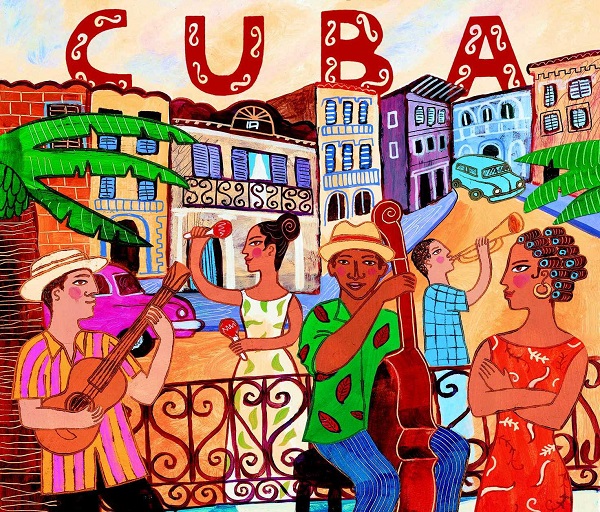12.7.1 Roberto Arturo Carcassés Cuza (Bobby Carcassés)

Roberto Arturo Carcassés Cuza, or Bobby Carcassés as he is popularly known, also known as the Cuban Showman, is a Cuban singer, trumpeter, pianist, and orchestra conductor. He was born in August 1938 in Kingston, Jamaica, because his grandfather was Cuban consul in that country, where he spent the first four years of his life. He was registered in Camajuaní, Villa Clara, in 1942 when he returned with his family to the Cuban archipelago, at which point he adopted Cuban citizenship.
He was a student of the singing teacher José Ojeda in Santa Clara. From a very young age, he performed as an amateur singer at the CMHW radio station in this city, performing arias from operas, zarzuelas, and Italian songs. He first performed before an audience as a guest of comedian Enrique Arredondo at the Teatro La Caridad in this province.
He moved to Havana in 1956 and made his professional debut with Bobby Collazo’s quartet in 1958. He also participated in Margarita Lecuona’s and Armando Zequeira’s trios. That same year, he traveled to the United States as a member of the orchestra conducted by Armando Romeu, which was featured in the show “Rumbo al Waldorf” at the Tropicana Cabaret (4504 Calle 72, Marianao, Havana), and performed at the New York Hotel and on the Steve Allen show. During this period, he also performed in Finland and the Soviet Union.
In 1959, he participated in Vienna, Austria, as a member of the A Cappella Choir directed by Nilo Rodríguez, at the World Festival of Youth and Students. From there, he moved to Bulgaria and Paris, where he performed with Pacolo and the orchestra of percussionist Benny Bennett, with whom he toured throughout Europe for a year. He also shared the stage with organist Lou Bennett, pianist Bud Powell, drummer Kenny Clark, and Cuban entertainer Pepín Baillant in Paris, where he continued working until 1962.
Upon his return to Cuba, he was one of the founders of the Havana Musical. He later worked at the Teatro Martí, where he performed vernacular theater works alongside Alicia Rico, Candita Quintana, Carlos Moctezuma, and Enrique Santiesteban. There, he honed his musical comedy skills and learned dance and mime.
He also pursued a career as an athlete, winning a gold medal and setting a national indoor record in the high jump. He was a member of Felipe Dulzaides’ Los Armónicos combo and Armandito Zequeira’s Los Cinco. In the late 1970s, Bobby performed at Club Johnny’s Dream (now Río Club) (Calle A No. 314, Miramar, Playa, Havana), where Nicolás Reynoso’s Grupo Sonido Contemporáneo and others also performed.
In 1979, Carcasés organized a series of successful concerts at the Plaza Cultural Center (Calzada No. 909, Vedado, Plaza de la Revolución, Havana). These concerts gave rise to the Jazz Plaza Festival, which had its first edition in 1980 and its fundamental objective was to expand jazz work in Cuba. It achieved the status of International Festival in 1984. Numerous prominent soloists and groups, both Cuban and international, have participated in this event. Bobby is its first President.
Since then, this multifaceted artist, composer and performer of popular music and jazz par excellence, has performed at countless Cuban and international music festivals and events. He has been a main promoter of the Jazz Plaza Festival, and has been a featured artist at every edition.
In 2000, he participated with pianist Roberto Carcassés, his son, in the Latin Festival of Los Angeles and in San Miguel de Allende, Guanajuato, Mexico, at the Jazz Festival.
In Cuba, throughout his artistic career, Bobby has performed on radio and television programs, as well as in countless theaters, concert halls, and clubs. Among these we can mention: Teatro Musical de La Habana (Consulate No. 302, Centro Habana, Havana), Teatro Hubert de Blanck (Calzada No. 654, Vedado, Plaza de la Revolución, Havana), La Casa de la Cultura de Plaza (Calzada No. 909, Vedado, Plaza de la Revolución, Havana), Teatro Mella (Line No. 657, Vedado, Plaza de la Revolución, Havana), La Sala Covarrubias (Paseo and 39th Street, Vedado, Plaza de la Revolución, Havana), Café Cantante (Paseo and 39th Street, Vedado, Plaza de la Revolución, Havana), and others.
Carcassés has his own group called Afrojazz; he plays several musical instruments: piano, flute, bass, drums, conga drum, and other instruments, including one of his own utopias, the mangerophone. In his performances, he fuses Cuban musical genres such as guaracha, rumba, and son with elements of jazz.
His work as a composer includes: Son de Cuba a Puerto Rico, Canto al deporte, Cuba campeón, Love will come with time, When summer comes, Como pompas de jabas (Like soap bubbles) and Blues Guanguancó, among others.
He has appeared as an actor in several Cuban and international films, including Un día en el solar (A Day in the Solar), De alguna manera (A Certain Way), and Robinson Crusoe (Robinson Crusoe). As a draftsman and painter, he has exhibited his work in the United States, Spain, Germany, Canada, and South Africa. He illustrated the second edition of Helio Orovio’s Diccionario de la Música Cubana (Dictionary of Cuban Music).
He has given master classes in Boston and New York. He has taken his music and performance to countries throughout Europe, Africa, the United States, and beyond. He has shared the stage with notable figures such as Anthony Carrillo, Vusi Kumalo, Eddie Palmieri, McCoy Tyner, Giovanni Hidalgo, Dave Valentin, and Tito Puente, among others.
Bobby Carcassés’ discography includes four albums: Recordando a Benny Moré, La esquina del Afrojazz, el Jazz Timbero, and Bembe Doble. He has also collaborated on other albums with Emiliano Salvador, Enrique Jorrín, Mario Bauzá, Chucho Valdés, his son Roberto Julio, and the band Interactivo.








